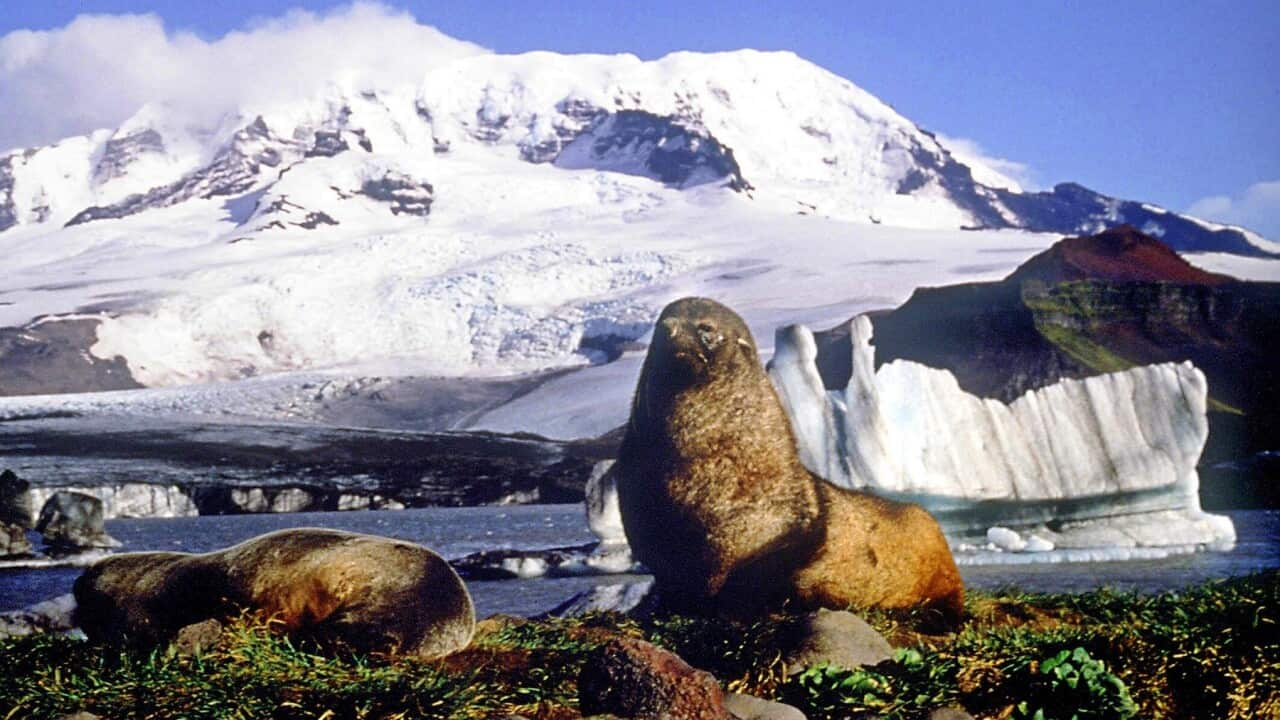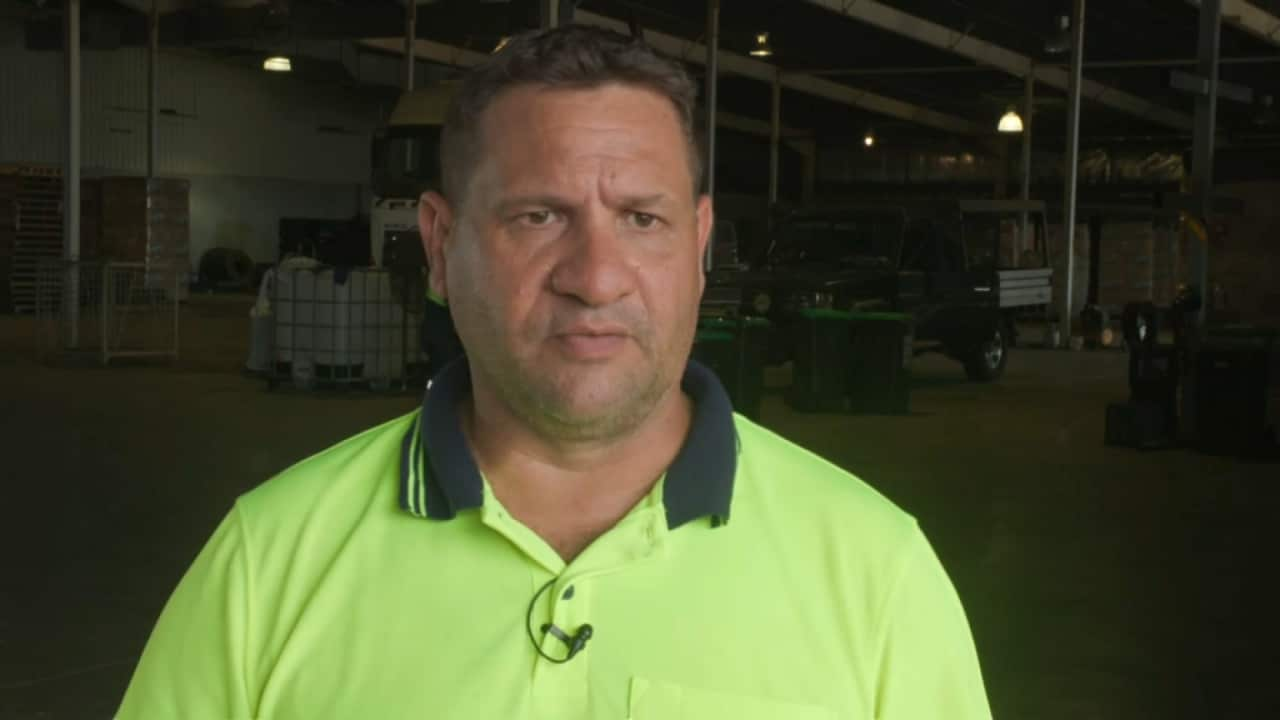English
They're among the most remote places on Earth - virtually untouched by humans.
World Heritage-listed Heard and McDonald islands are home to glaciers, wetlands, active volcanoes and an abundance of marine life.
The subantarctic islands are a remote group located 4,000 kilometres southwest of Western Australia.
Polar adventurer and environmental scientist Tim Jarvis has seen it first-hand.
"Think Galapagos in the southern ocean - they are really teeming with the most incredible life. Penguins, seals, whales, albatross, birdlife and there couldn't be a more worthy place for protection than these places."
Preservation of Heard and McDonald - and the ocean that surrounds them - is a responsibility that lies with Australia, which took possession of the islands from the United Kingdom in 1947.
A ten-year review of how the islands are managed is due this year.
Professor Ian Cresswell, an environmental scientist at the University of Western Australia, says the stakes are high.
"These 10 yearly reviews and the opportunity for the public to have comment on them is our only opportunity to influence marine conservation in the Commonwealth areas. So they're incredibly important. "
Professor Jarvis points to climate change and commercial fishing as the biggest threats.
"We're seeing the melting of the glaciers on the islands, which are really having a major affect on the marine life in the area and the amount of sediment that ends up in the ocean as a result. So climate change is really having a really pronounced affect on these islands."
Currently, 17 per cent of the waters around the islands are a designated sanctuary zone.
In July, the Federal Government unveiled a plan to expand the marine reserve by over 300,000 square kilometres so that almost 90 per cent of Australia's exclusive economic zone will have some sort of protection.
The reserve is divided into three categories - the Sanctuary, the National Park and Habitat Protection zones.
The Sanctuary and National Park zones - which account for about 50 per cent - offer the most stringent levels of protection.
Professor Jarvis says while the expansion is welcome news, the areas of highest ecological value do not sit within these boundaries.
"It's good that we have this extra protection in terms of the scale of that protection. We just need to see more of those really important areas, like the canyons and the seamounts, which are these incredibly important habitats for foraging sealife included within that 50 (per cent)."
In a statement to SBS News, a spokesperson for the Department of Climate Change, Energy, the Environment and Water said:
"The proposed expansion ...was informed by the best available science" and adds that the Minister "will review any new science and information that becomes available through the current public consultation process before making a decision."
An independent scientific report, published in February, recommends protection for six key conservation features.
Professor Ian Cresswell was a co-author, and says five of the six key conservation features do not sit within the areas offering total protection.
"But it can be improved. We know we can increase the areas of protection, closer to the shore, in areas of seamounts and chains of highly productive areas of biodiversity, and if we put those under protection, small changes to the boundaries will make a major difference to the long-term viability and biodiversity in the area."
The scientists insist if we get it right, Australia could position itself as a global leader in the conservation of the fragile Antarctic region.
Italian
Sono tra i luoghi più remoti della Terra, praticamente incontaminati dall'uomo.
Le isole Heard e McDonald, dichiarate Patrimonio dell'Umanità, ospitano ghiacciai, zone umide, vulcani attivi e un'abbondante fauna marina.
Le isole subantartiche sono situate a 4.000 chilometri a sud-ovest del Western Australia.
L'avventuriero polare e scienziato ambientale Tim Jarvis le ha viste di persona.
"Think Galapagos in the southern ocean - they are really teeming with the most incredible life. Penguins, seals, whales, albatross, birdlife and there couldn't be a more worthy place for protection than these places."
La conservazione di Heard e McDonald - e dell'oceano che le circonda - è una responsabilità che spetta all'Australia, che ha preso possesso delle isole dal Regno Unito nel 1947.
Quest'anno è prevista una revisione decennale della gestione delle isole.
Il professor Ian Cresswell, scienziato ambientale della University of Western Australia, ha affermato che la posta in gioco è alta.
"These 10 yearly reviews and the opportunity for the public to have comment on them is our only opportunity to influence marine conservation in the Commonwealth areas. So they're incredibly important. "
Il professor Jarvis ha indicato i cambiamenti climatici e la pesca commerciale come le principali minacce.
"We're seeing the melting of the glaciers on the islands, which are really having a major affect on the marine life in the area and the amount of sediment that ends up in the ocean as a result. So climate change is really having a really pronounced affect on these islands."
Attualmente, il 17% delle acque intorno alle isole è una zona designata come Santuario.
A luglio, il governo federale ha presentato un piano per espandere la riserva marina di oltre 300.000 chilometri quadrati, in modo che quasi il 90% della zona esclusiva dell'Australia abbia una sorta di protezione.
La riserva è divisa in tre categorie: il Santuario, il Parco nazionale e le zone di protezione dell'habitat.
Le zone del Santuario e del Parco Nazionale - che rappresentano circa il 50% - hanno i livelli di protezione più severi.
Secondo il professor Jarvis, sebbene l'espansione sia una notizia positiva, le aree di maggior valore ecologico non rientrano in questi confini.
"It's good that we have this extra protection in terms of the scale of that protection. We just need to see more of those really important areas, like the canyons and the seamounts, which are these incredibly important habitats for foraging sealife included within that 50 (per cent)."
In una dichiarazione rilasciata a SBS News, un portavoce del Dipartimento per il Cambiamento Climatico, l'Energia, l'Ambiente e l'Acqua ha affermato quanto segue:
"The proposed expansion ...was informed by the best available science" and adds that the Minister "will review any new science and information that becomes available through the current public consultation process before making a decision."
Un report scientifico indipendente, pubblicato a febbraio, ha raccomandato la protezione di sei elementi chiave di conservazione.
Il professor Ian Cresswell ne è stato coautore e ha affermato che cinque dei sei elementi chiave di conservazione non rientrano nelle aree che offrono una protezione totale.
"But it can be improved. We know we can increase the areas of protection, closer to the shore, in areas of seamounts and chains of highly productive areas of biodiversity, and if we put those under protection, small changes to the boundaries will make a major difference to the long-term viability and biodiversity in the area."
Gli scienziati insistono sul fatto che, se si riuscisse a farlo bene, l'Australia potrebbe posizionarsi come leader mondiale nella conservazione della fragile regione antartica.







